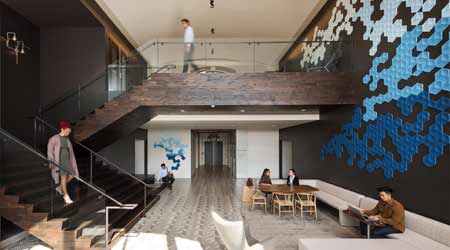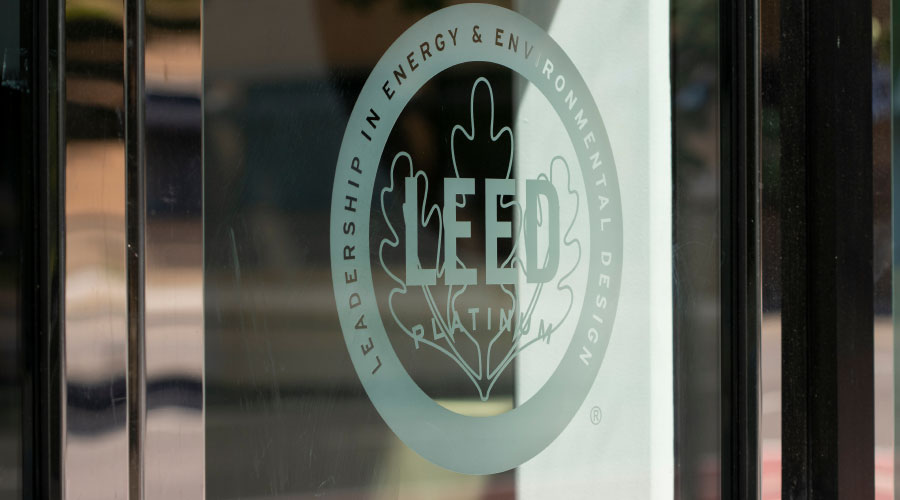 In four years, Sara Neff, senior vice president of sustainability at Kilroy Realty, led the REIT from no formalized sustainability program to being the top-ranked real estate company across all asset classes.
In four years, Sara Neff, senior vice president of sustainability at Kilroy Realty, led the REIT from no formalized sustainability program to being the top-ranked real estate company across all asset classes.Collaboration Is Catalyst for Sustainability Success at Kilroy
As is the case with any good leader, Neff is quick to credit teamwork and cross-functional collaboration for sustainability successes.
When asked if she is the catalyst for the sustainability gains at Kilroy, Neff is quick to give credit to the team, starting at the top. When Neff was hired, the directive from John Kilroy, the company’s CEO, was that he wanted to lead the market on sustainability. Kilroy, an accomplished sailor, had long had environmental issues close to heart, according to Rob Swartz, senior vice president of the company’s Pacific Northwest division. “He pulled in Sara, and has given Sara both the support and the free rein to really go for it,” Swartz says. “I think that makes us different from other real estate companies.”
“We want to lead the parade,” Neff says, quoting Kilroy’s directive to her. “So if there’s any great thing on the market, we want to be doing it.” However, that directive is not carte blanche, and it is also does not mean Neff can achieve that goal on her own.
“The only reason this whole thing works is because everybody here gets that this is the way we do business,” Neff says. “I’m not the person who is closest to a lot of the opportunities. I’m not in the buildings. I’m not a lawyer. I’m not the head of risk management. What happens is that those people recognize opportunities in sustainability, they bring them to me, and we work together.”
One example of this is Kilroy’s green leasing program. In 2014 and 2016, Kilroy won Green Lease Leaders recognition from the Institute for Market Transformation (IMT), and their current leases meet IMT’s highest standards for green leasing. That was a product of a collaboration between the standards team, the legal team and Neff. The standards team came to her to let her know they were going to standardize the leases. Because Neff continually asked for sustainability tweaks to leases on a case-by-case basis, the standards team wondered if they could work together to bake the sustainability language into the leases across the board. “Well, I would never have known they were standardizing the leases,” Neff says. “I don’t work in legal. But they saw the opportunity and came to me.”
Another example of deep cross-function collaboration that Neff is particularly proud of is the presence of sustainability disclosure language in the 10-K, the annual financial report filed with the Securities and Exchange Commission, which Neff admits is not as sexy an achievement as solar arrays or a biodiversity program (both of which Kilroy has). “How often is sustainability part of the financial reporting team?” Neff says. “I don’t know that that happens very often.”
Kilroy was the first publicly traded company to provide standardized sustainability disclosures in the annual financial report. It was important to Neff because that is the main document investors read. “I’m really proud of it because it really shows that everybody gets it, and everybody is on the same page here in terms of what we’re doing,” she says. It took collaboration from the legal, accounting, and auditing teams.
“The whole point is that you can’t execute sustainability alone,” Neff says. “I would spend all of my time just to get lighting retrofits across the finish line. You have to be able to trust your team to get this stuff done.”

(Kilroy’s Liberty Station in San Diego, Calif., is a LEED Gold Core and Shell building. Large windows allow natural light into the building and offer views onto nearby San Diego Harbor. Credit: Auda & Coudayre Photography, courtesy Kilroy Realty)
Unlike some of her peers in other companies, Neff benefits from having a dedicated sustainability budget. While it is not funded by the savings created by earlier projects, it is a stable amount that she can rely on to pursue targeted initiatives. This allows her to focus on sustainability on its own merit, rather than pitting it against other more pressing needs, like critical repairs. “It’s not a great idea to have those things compete with the sustainability capital,” Neff says. “(Sustainability is) never an emergency, so it’s just hard to prioritize.”
That said, the projects Neff pursues have pretty exacting performance requirements to make the cut. She’s looking for projects with a three-year payback or which are related to a particular certification Kilroy is pursuing, or which perhaps play into renewable energy infrastructure. “We need to drive value for our tenants, and you don’t do that without being careful about how you spend your capital,” Neff says.
Related Topics:
















